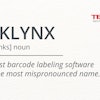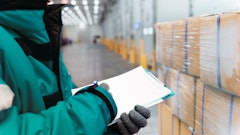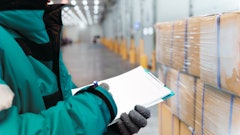
The world grows more complex every day, with new ways to connect to one another and different approaches to structuring businesses emerging faster than we can keep up. With so many innovations in the works, it’s critical to grab onto the best ideas and use them to future-proof our enterprises. And, for the food distribution industry, there appears to be no better emerging technology to jump on than blockchain, a cutting-edge ledger system set to revolutionize transparency and traceability across many sectors.
Originating as the means of tracking and securing cryptocurrency transactions, blockchain records transactions at all levels of an organization. Because it was developed to ensure the trustworthiness and reliability of financial transactions without a government backer, blockchain features two key traits that make it an ideal tracking tool for any complex industry — with food distribution pipelines absolutely included. Both of these traits -- decentralization and security -- are sorely missing from current food supply networks, and when taken together, could solve any number of long-term problems the industry faces today or may face tomorrow.
Decentralization -- all your eggs in every basket
The first of these key traits is decentralization. Blockchain’s ledger is distributed to multiple sources across the network, so that all stakeholders have access to the same information at the same time. Changes made at one step in the pipeline appear at once to everyone involved. With blockchain, record-keeping is no longer a haphazard affair where everyone keeps their own ledger with their own ecosystem, inscrutable to everyone else, to be collated manually or not at all. Instead, changes appear on the same shared system, with all parties informed of any developments in real time. This innovation alone lets blockchain turn a collection of different organizations into a single unified team working toward the same goal, everyone aware of everyone else’s actions and goals.
Security -- nothing slips through the cracks
On top of being distributed across multiple networks, blockchain also provides unprecedented information security, as transactions or changes made to the ledger cannot be altered or hidden in any way. Whenever anyone makes a change anywhere in the ledger, that change is recorded and reported to other stakeholders for confirmation, replicated across all other copies of the decentralized network. Everyone in the network must confirm and validate those changes before they become final and official. All deletions or edits to any item are recorded with the exact time and date, as well as the identity of the person who made the changes. This makes errors instantly traceable to each source.
A killer combination
This fusion of distributed, redundant copies of data of the same ledger and fool-proof recordkeeping that is “always on” makes blockchain the perfect solution for food supply chain managers dealing with complex and sometimes delicate supply lines. With blockchain, identifying an individual item’s step on its journey from farm to plate becomes instantaneous. No error can slip through the cracks, and any partner along the supply chain making a decision will immediately and automatically inform everyone else. By adopting blockchain, supply managers can go from herding cats to leading the pack, as different companies with diverse recordkeeping systems all integrate into a single, shared ledger.
Supply chain telepathy
Blockchain’s revolutionary capabilities turn a cumbersome, disconnected alliance of systems into one streamlined, shared ledger where critical information is shared. This allows for unprecedented reactivity and flexibility, eliminating lag and the need to translate between separate systems. Anyone in the ecosystem can see at any time what their partners are up to and where a particular delivery is located. Inventories, financial records and projects are all tracked in real time, allowing everyone to monitor the entire pipeline with proper stakeholders setting permissions. Using blockchain, it will be possible to monitor and anticipate needs across an entire distribution chain.
Suddenly, both major business decisions and crises can be handled quickly and efficiently. Suppliers can know right away if a retailer takes out a loan to re-stock a product and adjust their own shipments to fill that need. With everyone in a network aware of everyone else’s storage and transport capacities, costly shipping errors can disappear entirely. Meanwhile, in the event of a dangerous disease outbreak, finding and recalling any tainted produce becomes much faster, eliminating messy guesswork as the blockchain ledger tracks every individual shipment across its entire journey — as well as what other products it’s been in contact with. In this system, recalls become fast and precise.
Learning from Bitcoin
Blockchain’s origins in cryptocurrency created the perfect tool for tracking and monitoring any transactional pipeline, especially one as complex and vital as food distribution. A widespread, decentralized ledger ensures redundancy and transparency, while instantly logged and tracked changes give everyone involved in a pipeline immediate access to any new moves or developments. An industry like cryptocurrency, where information is power, was the perfect incubator for a tool like blockchain, which keeps that information clear, secure and easy to access.
Nothing is more important than making sure everyone has access to safe and healthy food. With the power of blockchain, we can guarantee our food has an easier, more trackable journey to kitchens, and save our distribution networks a lot of unnecessary and outdated headaches.



















